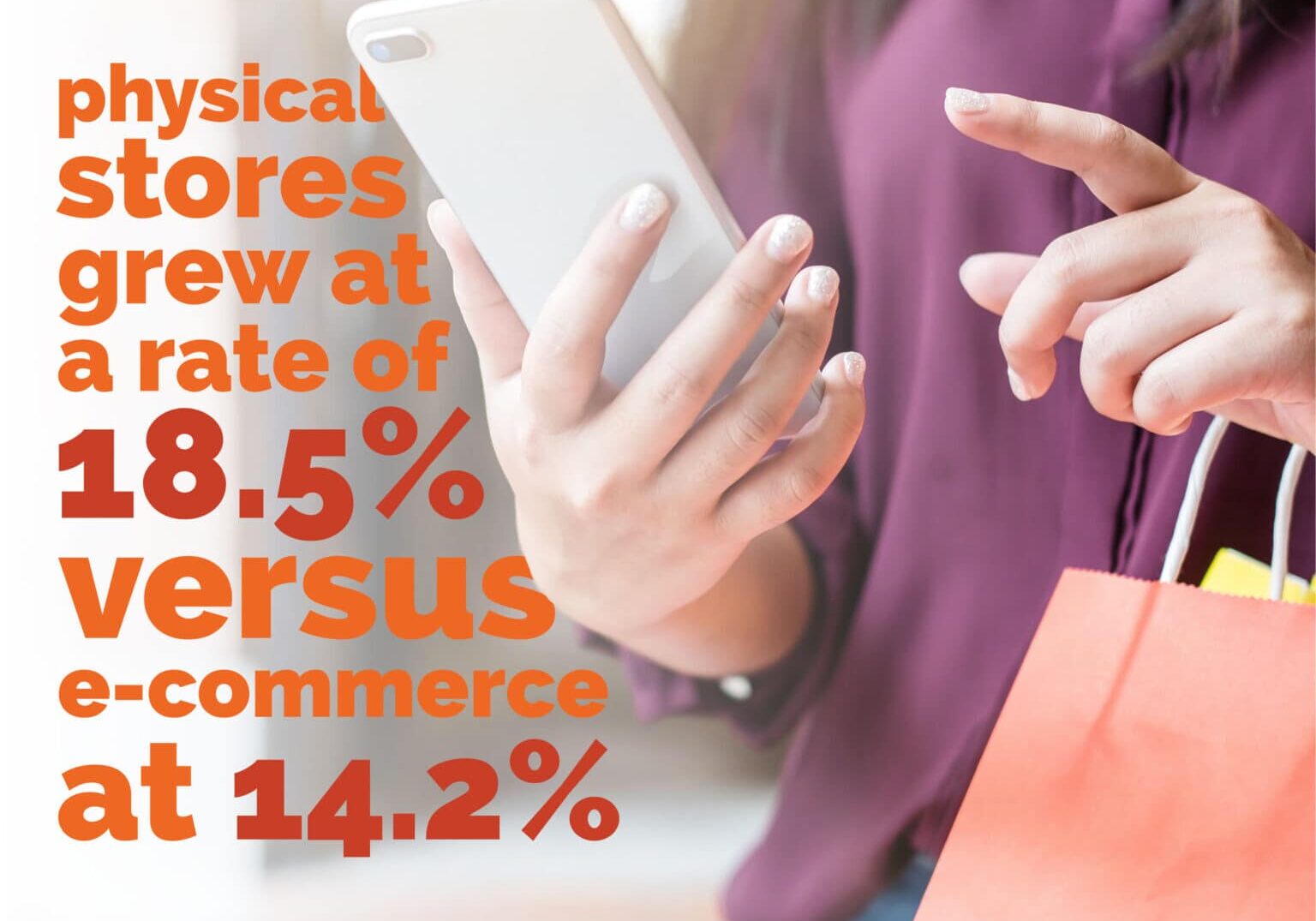Omnichannel Will Rule Black Friday. Is Your Data Ready?

December 6, 2022

How both physical and digital data can win Black Friday
This upcoming holiday season, we anticipate that Black Friday will get back to being, by and large, an in-person event. But consumers will be planning their shopping trips informed by what they see online, so in reality the shopping will be omnichannel. Marketers will need an omnichannel strategy to match.
When shoppers started returning to stores in 2021, one thing became clear: Despite the growth of e-commerce, brick-and-mortar retail isn’t going anywhere. As pandemic regulations relaxed last year, IRL stores exploded in growth, faster than e-commerce for the first time in a long time. According to data from the U.S. Bureau of Commerce, physical stores grew at a rate of 18.5% versus e-commerce at 14.2%.
This trend is continuing in 2022. In the first five months of this year, more than 4,000 new stores have opened. That’s more than double those that have closed, which would potentially make 2022 the first year since 2016 with net-positive store openings.
Where does that leave e-commerce? During the pandemic, it was thought that e-commerce activity would stifle physical retail forever, making brick-and-mortar shopping obsolete. So, advertisers and marketers adjusted their campaigns to prioritize online shopping and data targeting. But now, after two pandemic-disrupted holiday shopping seasons, we know people want to be involved in the physical, visual and social experience that comes along with brick-and-mortar retail.
IRL retail enjoying boom times
Although e-commerce has leveled off in growth following the pandemic, it still forms a significant chunk of retail, more than before 2020. The COVID-19 pandemic actually gave e-commerce a push to develop infrastructure for many companies lacking a digital presence. More than 80,000 online stores opened in the six months following the onset of the pandemic. But the reverse is also true. Companies like Fabletics and Warby Parker, which used to be strictly online, are now opening even more brick-and-mortar locations. Now more so than ever before, the two go hand in hand.
What does this mean for marketers and advertising teams? Well, it means that for a successful campaign, you’ll have to look at the integration of offline and online data (rather than each one individually) to determine the preferences of your prospects. You’ll need to follow them in both the real world and across devices. Having omnichannel shoppers means you need an omnichannel strategy to reach them.
How close to a brick-and-mortar location does your prospect live? This will determine how likely they are to shop there and make them more likely to make online purchases too. Further, online pre-shopping is becoming more common, with customers checking out deals, finding coupons, shopping online and picking up in-store or curbside. It also means they’re deciding what and where to buy, down to the aisle where an item’s located.
These are just some of the online behaviors consumers engage in before heading out of the house. It’s no surprise that online sales increase within a 10-mile radius of a retailer’s store location. The many ways to do omnichannel shopping make it easy to see why consumers shop, offline and online, near where they live.
* originally published in AdAge, September 2022


